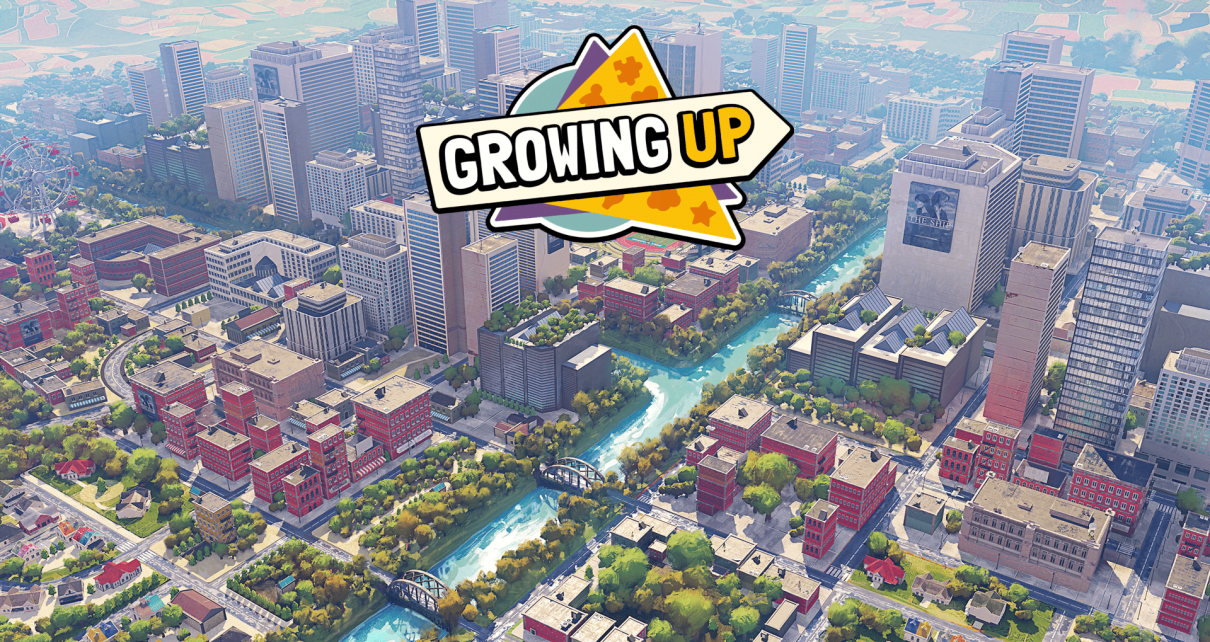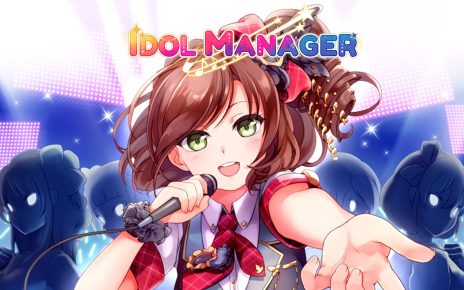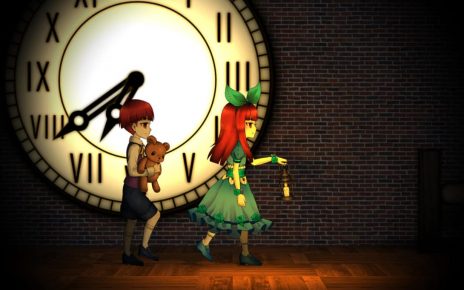Experience the laughter and tears of growing up through Vile Monarch’s newest baby. Growing Up is a life sim released for PC in nine languages on 14 October 2021. Set in a U.S. city during the 1990s, Growing Up puts players in the shoes of a child who is navigating the strange maze of life. It is a cyclic journey of tackling their parents’ expectations, completing school, befriending people from all walks of life, and becoming who they aspire to be.
Before moving on to the review proper, it is perhaps worth noting that Vile Monarch has mentioned Growing Up is “authorized by the team of Chinese Parents”, a life sim released by Moyuwan Games in 2018 with a similar premise but set in China. Having said that, no comparisons will be made between the two games in this spoiler-free review.
At the point of writing, up to patch v1.0.3781 has been released, but the following review is based on the version at launch (1.0.3744).
Oh, to be a Child again…
As straight to the point as its title is, Growing Up follows the coming-of-age journey of the main character whom one can interpret as themself or their child. Each playthrough takes around four to six hours, during which the player will carve the character’s future by taking charge of their learning, actions, and wellbeing over 18 in-game years until they graduate high school. The character’s life after high school, if they manage to get that far, will be summarised in an epilogue before the game automatically moves on to the next generation, to a new playthrough.

Via “New Game” from the main menu, the first generation begins and only for this generation, players have the option to choose the character’s parents and sex, or leave one or both up to fate. There are four female and four male parents of different races to choose from, and the player may choose a pair of either heterosexual or homosexual parents. Players may also choose for the character to be a girl or boy, which affects not only how the character will look throughout their lifetime (feminine or masculine) but their bedroom design and the range of alternative hairstyles and outfits available to them as well.
As far as character customization goes, there is little control given to players. The character’s race is largely determined based on the parents’ races, and apart from the character’s sex and name, players will have to roll along with whoever the game randomly generates for them. Furthermore, in subsequent generations, unless they start from a “New Game” again, players get to decide only the character’s name. You know, like in real life. Growing Up pretty much mimicked this aspect of real-life well as a life sim. While I do not get to decide how my character looks, it has been a wonderful surprise to watch how their appearance changes as they grow from a cute baby to a cute adult. Nevertheless, most of my characters tend to look like their predecessors once they reach the high school phase, even when they looked different from each other during the preschool and elementary school phases. I had a female character who wore the exact same outfit and had a similar hairstyle as her mother. Talk about the child being a spitting image of the parent!
Character customization is further limited with the restrictive gender ideas Growing Up adopted in order to stay true to the 1990s setting. In the newborn phase, baby girls are given pink bedrooms and baby boys play in blue bedrooms. Similarly, girls and boys have their own separate sets of hairstyles and outfits, which is somewhat a pity since I would have loved to see my boy with a long ponytail or my girl in a leather jacket.
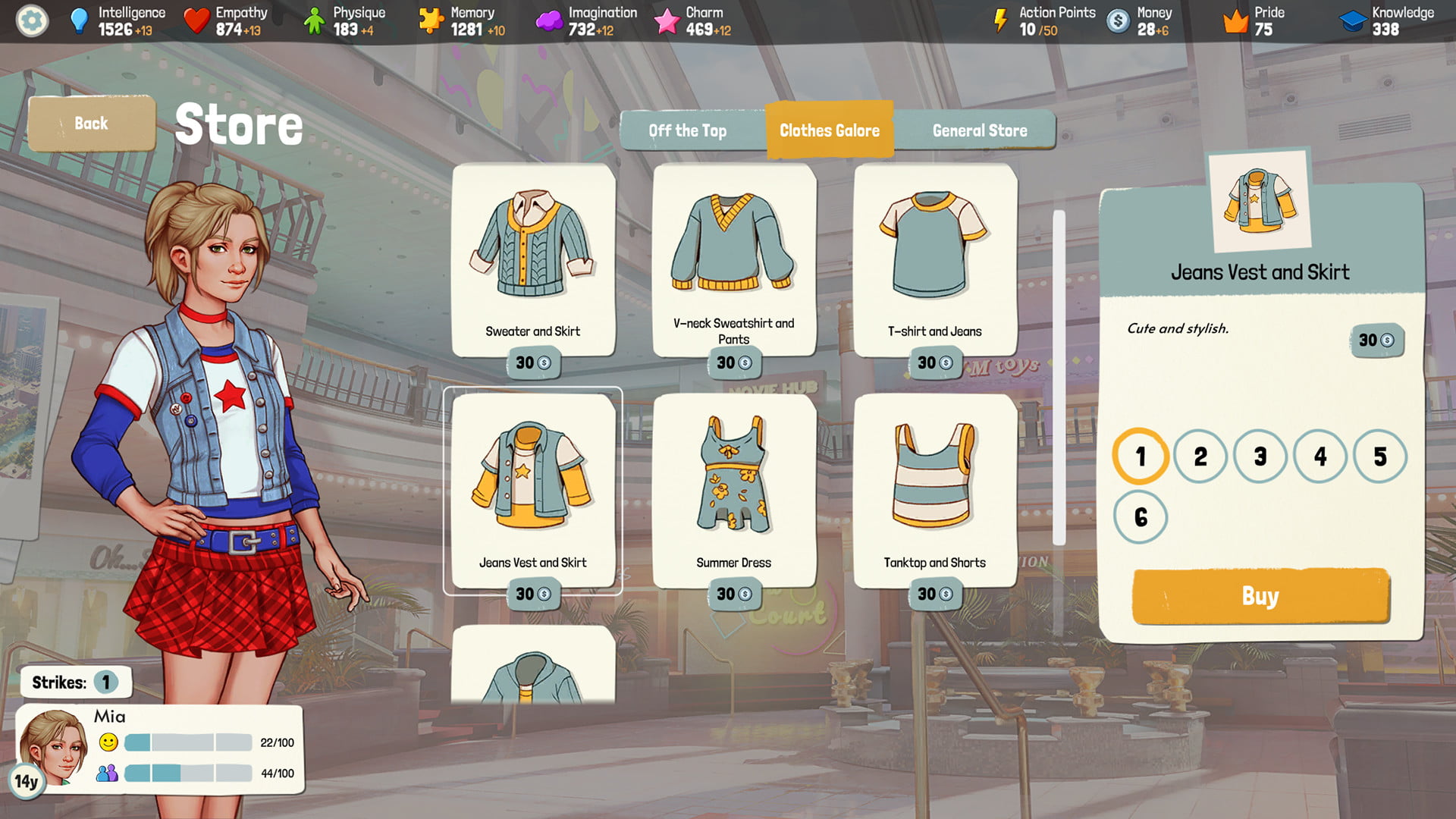
On a related note, while the game keeps to the ’90s fashion closely, it would have been nice to include more accessories that were a fad then, like athletic wristbands and slap bracelets. Seeing one of the non-player characters (NPCs), Alex wearing her snapback cap backward reminds me of how I wore it as a kid too. But sadly, I can’t find a character who ties a sweater around their waist.
Study, Play, Exam, Repeat.
In every generation, the character goes through the same timeline: do what babies do as a newborn, then enter preschool and subsequently elementary, middle, and finally high school. Each phase lasts for a set number of turns and from preschool onwards, the character will take an exam at the final turn of each educational stage. Tutorial prompts, which can be hidden under “Options”, are detailed and guide players through the stats-raising system in a logical manner, starting from the basic building blocks and gradually going into more aspects. For example, the newborn phase lets players learn about the basics of the stats-raising system, namely the game turns, acquirable skills, Knowledge Points to learn them, the Brain Map to increase the character’s attributes, and the Schedule for assigning activities for that turn. During the preschool phase, the character’s Mental Health is added. Parents’ Satisfaction and their expectations are considered from the elementary school phase onwards, and allowance is given starting from the middle school phase.
Such a gradual introduction of game elements over different phases in Growing Up helps to keep one’s learning and adaptation to the game’s increased complexity more manageable. Thus, even though the amount of information to take in may be plenty during the first playthrough, it did not feel too overwhelming.
With more and more stats to juggle, the game naturally gets more challenging as the character grows older but it is not weighted unfairly against the player; avenues that help counter the increased difficulty are provided throughout in a timely manner. For this game, it is more of a matter of discovering which strategies work best and sticking to the same strategies for all playthroughs. Personally, I find Growing Up’s challenge level to be moderate. This was before balance changes were made in the v1.0.3772 patch that lowered the difficulty. It was not easy to pull the values of Mental Health and Parents’ Satisfaction up to the high range for getting extra perks. And during the middle school phase, it felt like a constant tug-of-war trying to keep both values within the safe range without going broke from buying help items like food that increase happiness. Things got noticeably easier to handle again during the high school phase, though, as higher-tier Entertainment and Work activities were unlocked by then.
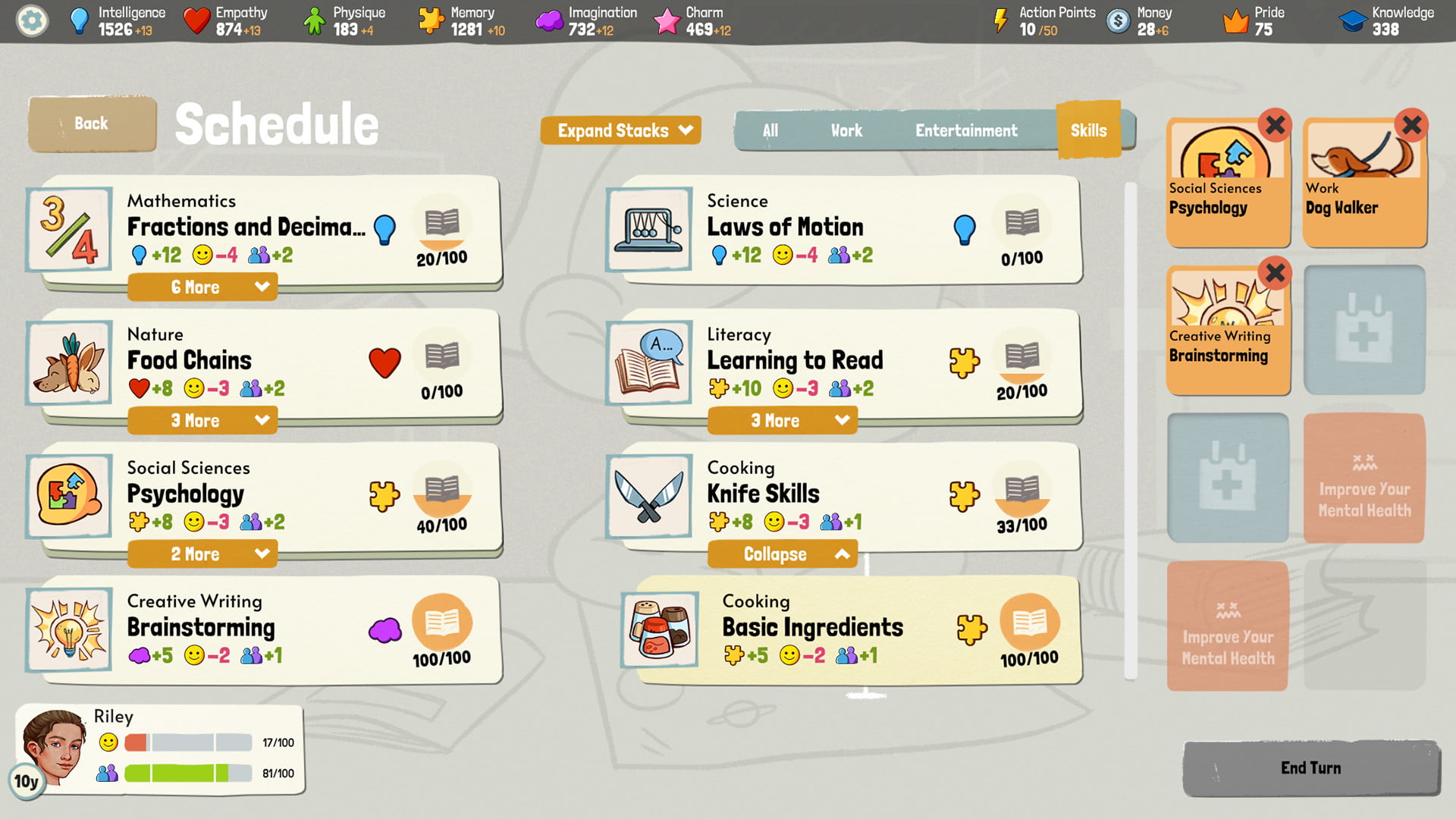
On top of all activities having clear descriptions on how they affect the character’s stats, I especially appreciate the Schedule system that makes it possible to keep the stats changes under close control. Because the Schedule goes through each activity in order and calculates the changes upon each activity’s completion, one can therefore assign activities to the Schedule Slots in a specific order that could, for instance, prevent the stats from hitting zero at any point. A series of -1, -1, +1 and -1, +1, -1 operations yield the same value in the end, but if the stat is at 2 points, then it will hit zero by the second -1 in the first arrangement, and never hit zero when going by the second arrangement. Since hitting zero in either Mental Health or Parents’ Satisfaction means the character will get a strike, with three consecutive strikes amounting to a game over for that character, the flexibility of the Schedule’s slot arrangement becomes useful in avoiding getting a strike. Or just useful for getting a good balance for the stats through proper planning in general.
For a stats-raising game, Growing Up has a well-structured tutorial and numerous clearly written explanatory tooltips that help players plan and strategize. RNG is present but instead of hindering players’ game progression, they mainly help ensure the gameplay does not get too boring. After all, players have to tackle Brain Map after Brain Map, expectation after expectation, and exam after exam in one playthrough. RNG ensures the Brain Maps do not have the same layout and the exam mini-games do not have a singular arrangement for the colored blocks. Still, in spite of the randomization implemented, the repeated motions of playing the same mini-games from turn to turn is nothing short of numbing. By my fifth playthrough, popping the neurons on the Brain Maps became quite the dreaded chore even when the process reminded me of my old pastime of popping bubble wraps.
The effects of RNG on the overall stats-raising experience is not felt strongly as they tend to be smoothed out over the turns. That is not to say the RNG in Growing Up did not cause any frustration, however. At each new turn starting from the elementary school phase, there is a chance of the character’s parents dropping a random expectation for them, say, to increase their Creativity attribute by 100 points within the next three turns. This particular expectation would have been attainable if at that point, I had access to one or two activities that raise Creativity. Just my luck, for two of my playthroughs, the same expectation dropped at a point when I could only rely on the Brain Map, which did not give enough Creativity points to pass the expectation. Then again, it is not unthinkable for parents to set expectations that are unattainable by their child, either because they are too high demands or against what the child wants. In a sense, this scenario is realistic albeit frustrating.
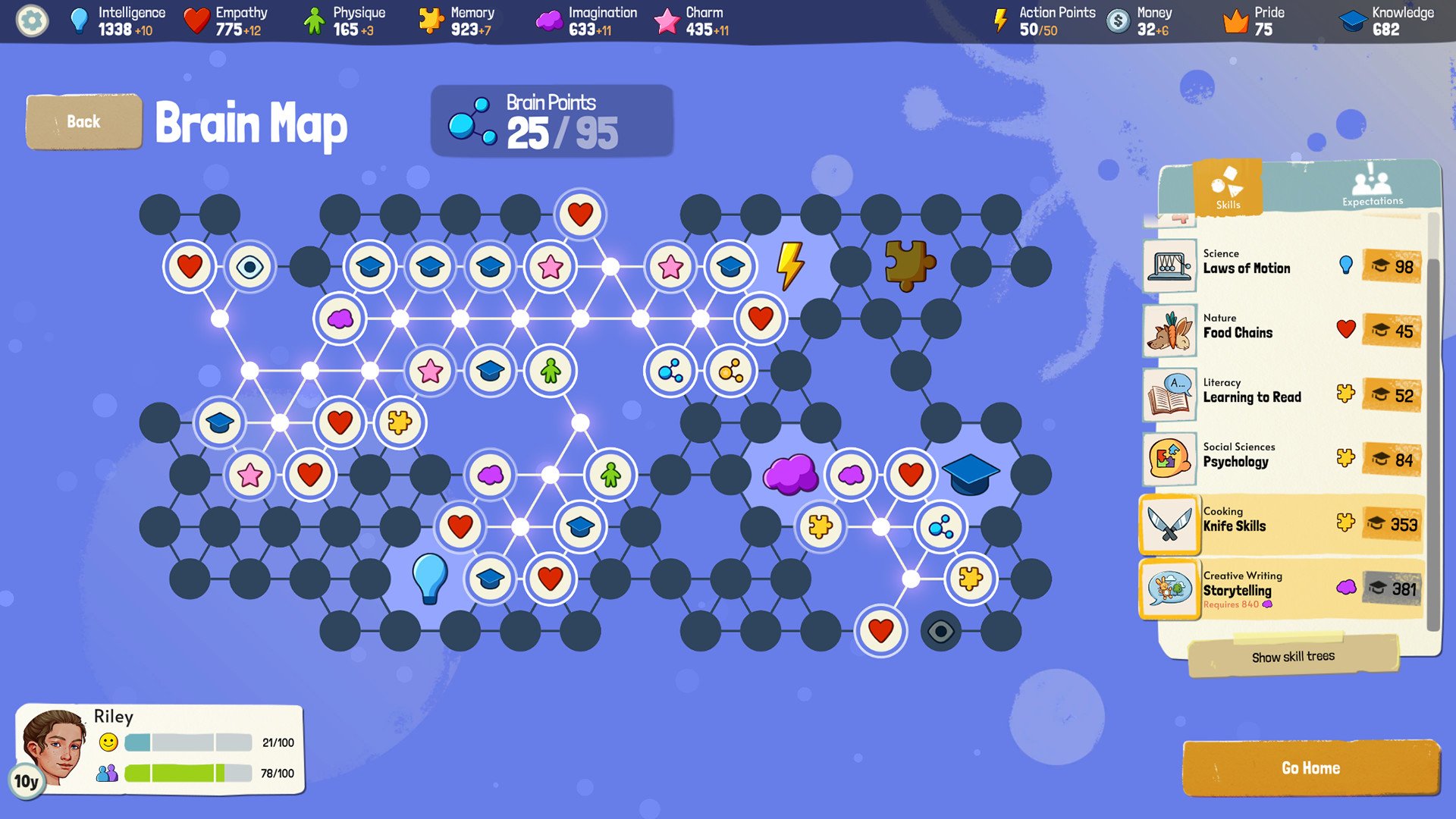
Disappointing Parents
Of all aspects of Growing Up, I am most disappointed by the parents. At the beginning of a “New Game”, there is a letter the parents wrote to the (unborn) character. It is a really heartwarming and encouraging letter promising a pair of caring, understanding, and supportive parents awaiting the character’s arrival. Well, unfortunately, the parents did not fully fulfill what they promised. Technically they look after the character in the background and nudge them along in life. But it does feel empty when they do not even show up to congratulate or celebrate the character’s graduation from school. It seemed like they only cared about dishing out one expectation after another — even when the character was having the final SAT exam in the very next turn, the parents were still putting out new expectations!
For such demanding parents who want their child to constantly meet a myriad of expectations, they feel pretty useless themselves in Growing Up. In particular, they do not confer any special perks to their next-generation that could have made subsequent playthroughs easier in varying aspects. Only the Skill Tree map gets passed down through the generations, though it is just an informational item detailing which skills were unlocked previously and hardly a beneficial perk. It is understandable for the first-generation parents to not have any perks but for the character who finally got through it all thanks to the player’s ceaseless effort, it is upsetting to see their own child not getting to enjoy the fruits of their labor at all. Due to the lack of any intergenerational perks, not even an increased allowance from a parent who is a CEO, playing from generation to generation feels much like a Sisyphean task.
Last but not least, parents in Growing Up are all the same. It does not matter what kind of personality the character has previously, once they become a parent, they will behave and say the exact same things as their parents did. Of course, the expectations they have of their child are the same too. Although a couple of scenes with the parents are funny and relatable (e.g. “stop slouching!”), the removal of any prior personality once the character becomes a parent makes them rather boring and at times, baffling.
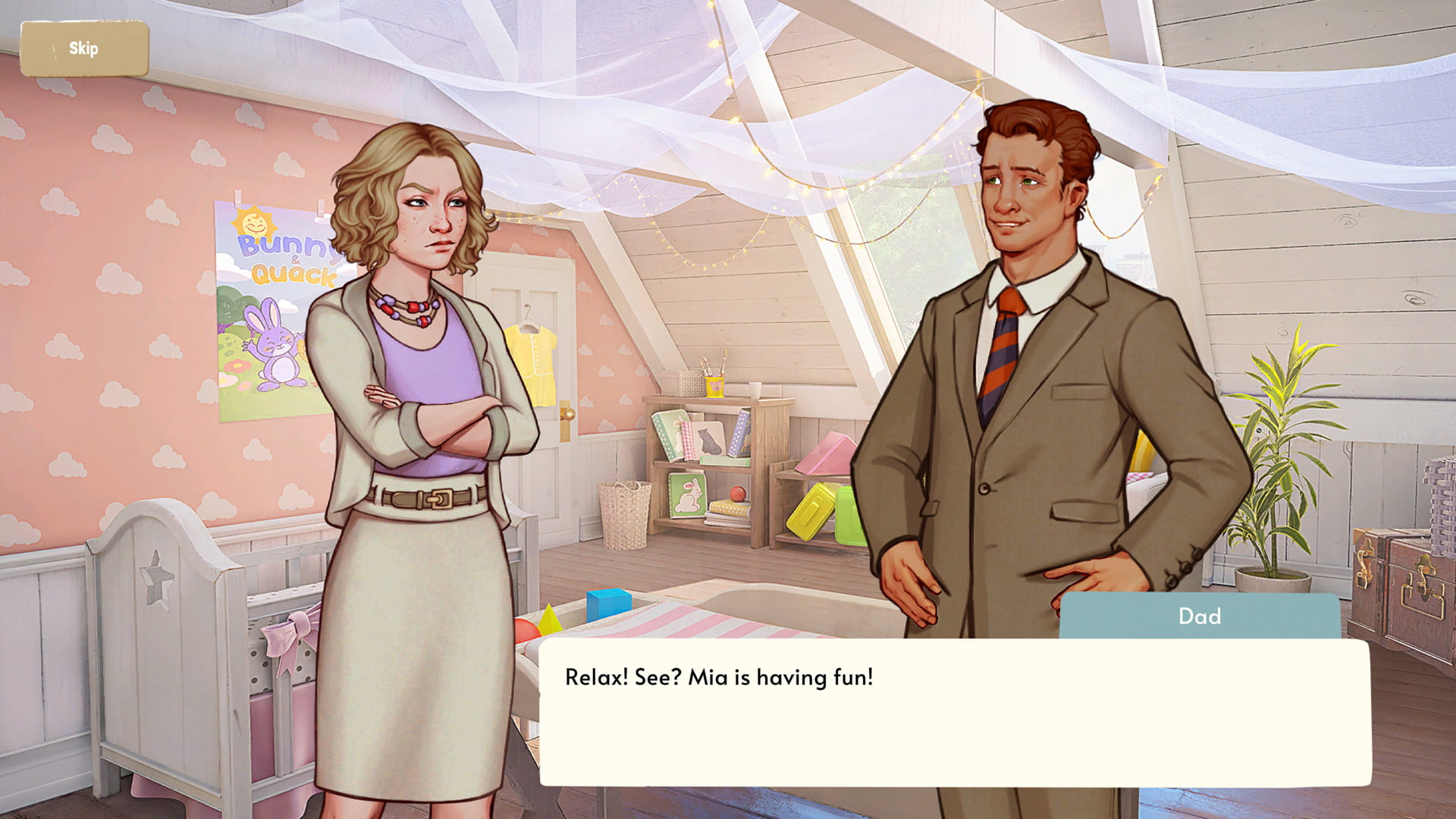
Who will you grow up to be?
Growing Up may not sound like it is worth replaying with its repetitive two mini-games, rigid parental behaviors, and lack of transferable perks in between generations, but there are other aspects present that help to boost its replayability. One such aspect is the total of 42 occupations available.
Each generation’s character can only be assigned a single occupation, so at least 42 playthroughs are required if one wants to gather all possible epilogue scenes for different occupations. Thus, there is an incentive for players to replay, though this incentive is regrettably weak. A lot of work is put into creating art assets that are shown only in the epilogue when the character’s occupation is revealed. More often than not, the character will be in an outfit and location never shown anywhere else in the game. Yet this unique epilogue scene is also very terribly short-lived. Imagine going through the whole trouble of clearing Brain Map after Brain Map, expectation after expectation, exam after exam only to get a few lines that sum up the character’s occupation. Perhaps short epilogues are common among stats-raising games, but I can’t help but think it is an absolute waste that the nice art assets prepared specially for this part have such a brief appearance.
Some occupations in Growing Up are also more difficult to obtain than the others as they are tied to certain schoolmates whom one may or may not meet in a given playthrough. I remember I planned to join the police force in one of my playthroughs but in the end, the police station never got unlocked since I did not meet any of the relevant schoolmates who could unlock it. To get those occupations, one really has to pray to the RNG god for good luck beforehand.

Another annoying thing about the career system is how players cannot manually choose the occupation they want if they have completed the Skill Tree requirements for more than one occupation. After my first character became a college dean without me knowing how, I trained my second character hard to be an athlete — only for her to end up as a doctor, which totally took me by surprise. I later surmised that the character spent too much effort studying Biology after mastering the side skills needed for athletes. While the assignment of the character’s final occupation is not entirely random, it may lessen confusion if Growing Up allows players to confirm the final job they want from a list of occupations they are eligible for in the end.
The friends we make along the way
The second aspect of Growing Up that boosts its replayability is its NPCs. Players can meet a total of nine possible schoolmates and ten professionals in the game. On the whole, these NPCs, particularly the schoolmates, are worth the multiple playthroughs to encounter and befriend.
In any given playthrough (i.e. for any generation), the player character will meet a total of three randomly selected schoolmates, one from each of the following educational stages:
- Elementary school – Alex, Richard
- Middle school – Alicia, Wendy, Nathan
- High school – Vivica, Kato, Sam, Felicity
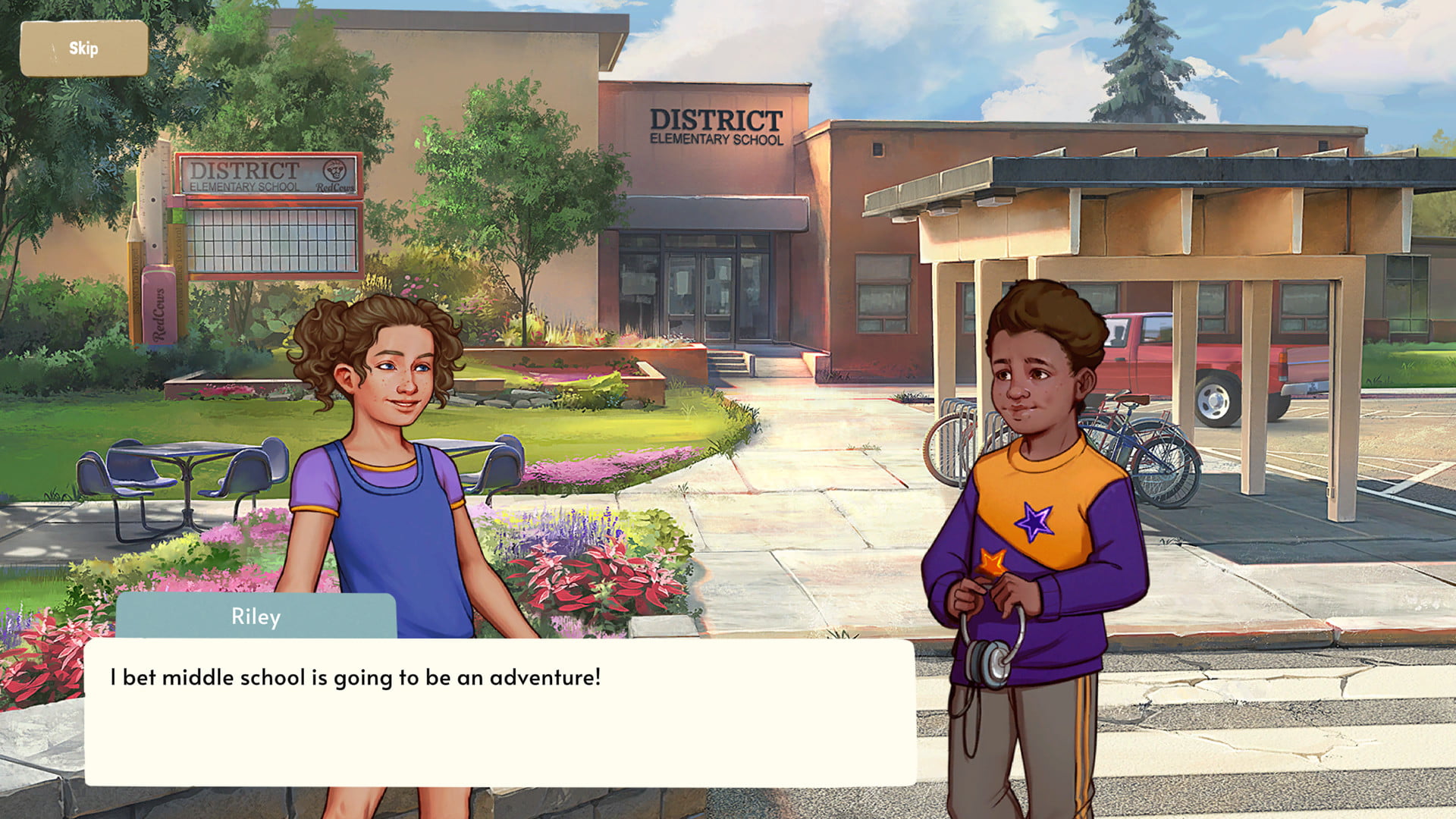
All schoolmates are romanceable and can become the player character’s spouse. However, they have their own sexual preferences, which is a nice change to the usual setting in visual novels where all love interests can be romanced regardless of the protagonist’s gender.
Just as how Growing Up’s minimal character customization system mimics real life, this design of NPCs with their own preferences and the randomization of schoolmates reflect reality closely too. Nonetheless, having the character’s schoolmates randomized during each playthrough can get aggravating after a few times. It is possible for one to keep meeting the same few schoolmates and not get the others until several playthroughs later. In addition, this means some would be reading through the same schoolmates’ story arcs over and over. Thankfully, the game has a “Skip” function for every scene and players may end a scene quickly with the game automatically making any dialogue choices for them. Though I would have preferred a “Skip to next choice” (or fast forward to next unread line) function since I am often interested to skip parts I have previously read and want to see what happens when a different choice is chosen.
As for the friendship arcs, they are generally well-written with much insight provided into the various issues and problems that each schoolmate is facing in their personal life. In addition to the depth of the NPCs shown, I love how the stories incorporate conflicts and in many cases, use them to illustrate how one may possibly work to reconcile and save the friendship. For this reason, I generally like those stories that began from the elementary and middle school phases more. Nevertheless, most stories have ultimately, in one way or another, conveyed that friendships require understanding and respect to build. There is also nice character growth observed for the schoolmates and it is heartwarming to see these friends growing up alongside the player character.
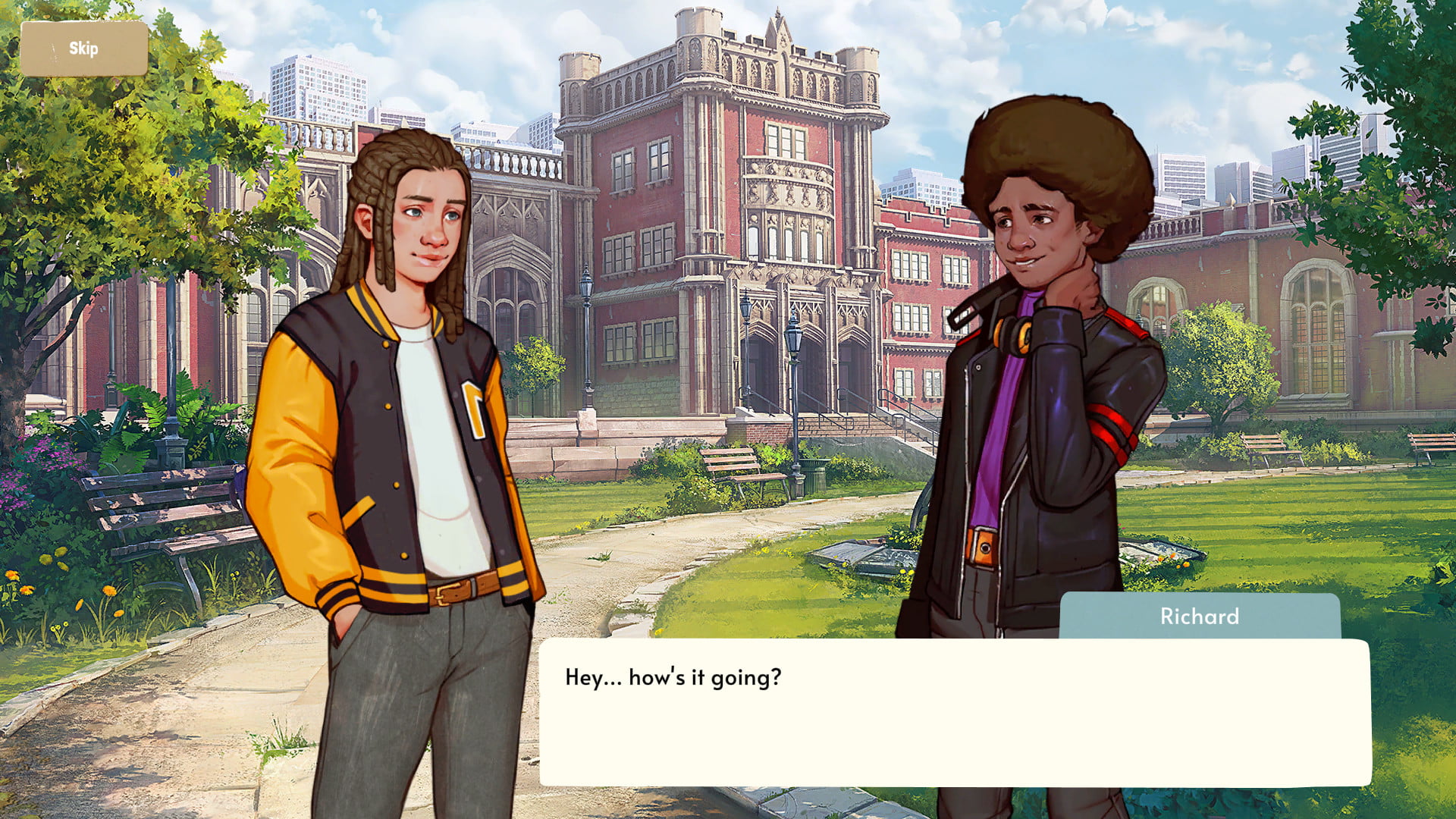
On the other hand, I am not very impressed with the romance in the schoolmates’ stories. The scenes are cute and sweet, and some choices are different depending on whether the player character is a girl or boy. I especially enjoyed Nathan’s and Richard’s scenes, including the epilogue descriptions of their thoughtful marriage proposal and blissful wedding. Wendy’s playful wedding brings a smile to my lips too. While I mostly enjoyed the ending, I disliked the process. In fact, I loathed that in two stories in particular, the choice at the final crossroads is only between kissing them and being friends forever. This means if my character does not want to kiss the schoolmate out of the blue as a way to convey their feelings for them, then the character is condemned to forever hold their peace. They don’t even get the chance to confess their love verbally! There is nothing wrong with kissing to convey one’s feelings, but when it is scripted as the only “correct” choice under Growing Up’s context, it leaves a bad taste in my mouth.
Similar to the randomization of the character’s occupation, players cannot choose their spouse if they have romanced no one or more than one schoolmate. If the player character manages to become lovers with more than one schoolmate, one of the lovers will be randomly chosen as the spouse in the epilogue. And if the player character does not romance anyone, they will be randomly assigned a generic spouse. There is also no choice to stay single, or to marry and not have a child, or to adopt a child for heterosexual couples. Streamlining this last bit of the epilogue helps to facilitate a fast transition to the next generation, but is prone to breaking the immersion of players who have been roleplaying as the character all along. During the playthroughs when my character ends up marrying a totally random stranger I don’t even care for, I really wished I could choose not to marry and just end the generation there.
Now, on the professionals’ side, there are 10 of them in Growing Up. Each professional is tied to a side skill and some are easier to meet than others. Their arcs are shorter and progress only when the player character advances along the Skill Tree for the side skill linked to them. Like the schoolmates, the professionals have their own troubles to work through as adults, which reflects a mature storytelling. Overall, I enjoy the dynamics between the professionals and the player character, and find them to be interesting figures. Some memorable traits include Riley’s enthusiasm in teaching the player character life-saving skills, Neal’s “whippersnapper” remark, Mei’s neighborliness, Elliot’s tendency to do as she pleases, and Sergio’s strange question about studying at a high school when the player character was just an elementary school student.

Art, Audio, and Performance
Like the writing that goes for more realistic storytelling, art in Growing Up stays close to the realism side as well. Except for activity animations that use a cartoon art style, character sprites and background art are drawn in a semi-realistic style. The choice of art style is excellent for a life sim aiming to provide an immersive experience of growing up in the ’90s America. If there is anything to be improved, it would be in terms of the skin coloring for characters with dark skins. Currently, those characters have the same color used for their palms as for their skin, which is not an accurate representation. It would also have been better if Felicity had another outfit than her cheerleading uniform.
Throughout the game, sound effects are mainly implemented as audio cues, such as to act as audio feedback for mouse clicks or to indicate if a scheduled activity failed or succeeded. Ambient sounds are also used for various locations, though I remember I once made the mistake of starting an exam when I was at the Funtasy Carnival, so in addition to the music, I could hear incessant chattering crowds in the background as I was playing the mini-game.
Music is by and large wonderful in Growing Up. I love how the music evolves as the character grows up, going from calming lullabies to energetic upbeat songs. Even the bad ending has its own song, which is something I did not expect. Personally, I love the whimsical song that plays during the preschool phase as well as Nathan’s song.

Regarding bugs, the ones I mostly encountered are minor typos and visual artifacts on some of the activity animations, most of which have since been patched. Otherwise, the game has been stable for me, though it does not seem well-optimized as my laptop gets rather warm quickly while running this mainly static 2D game.
Verdict
The biggest factor in Growing Up that convinces players to play the game more than once is its character stories, which I personally find are sufficiently good rewards in exchange for the whole grueling gameplay the game puts me through. If coming-of-age stories of young students are not one’s cup of tea, then they would have to be quite the completionist in order to stay motivated enough to replay it for all the different career endings. Otherwise, the game mechanics themselves — from the disappointing parents to the numerous Brain Maps that are easy to grow weary of — actually discourage one from replaying too many times.
But considering one to three playthroughs, this game is worth playing. Its strong points lie in the art and music departments, and the general portrayal of the 1990s. All in all, Growing Up is a so-so stats-raising game with some meaningful and thought-provoking stories to tell.
GROWING UP IS RECOMMENDED

If you would like to read about Simulation games, you might be interested to read this review of To The Rescue.
Many thanks to Vile Monarch for a PC review code for this title.
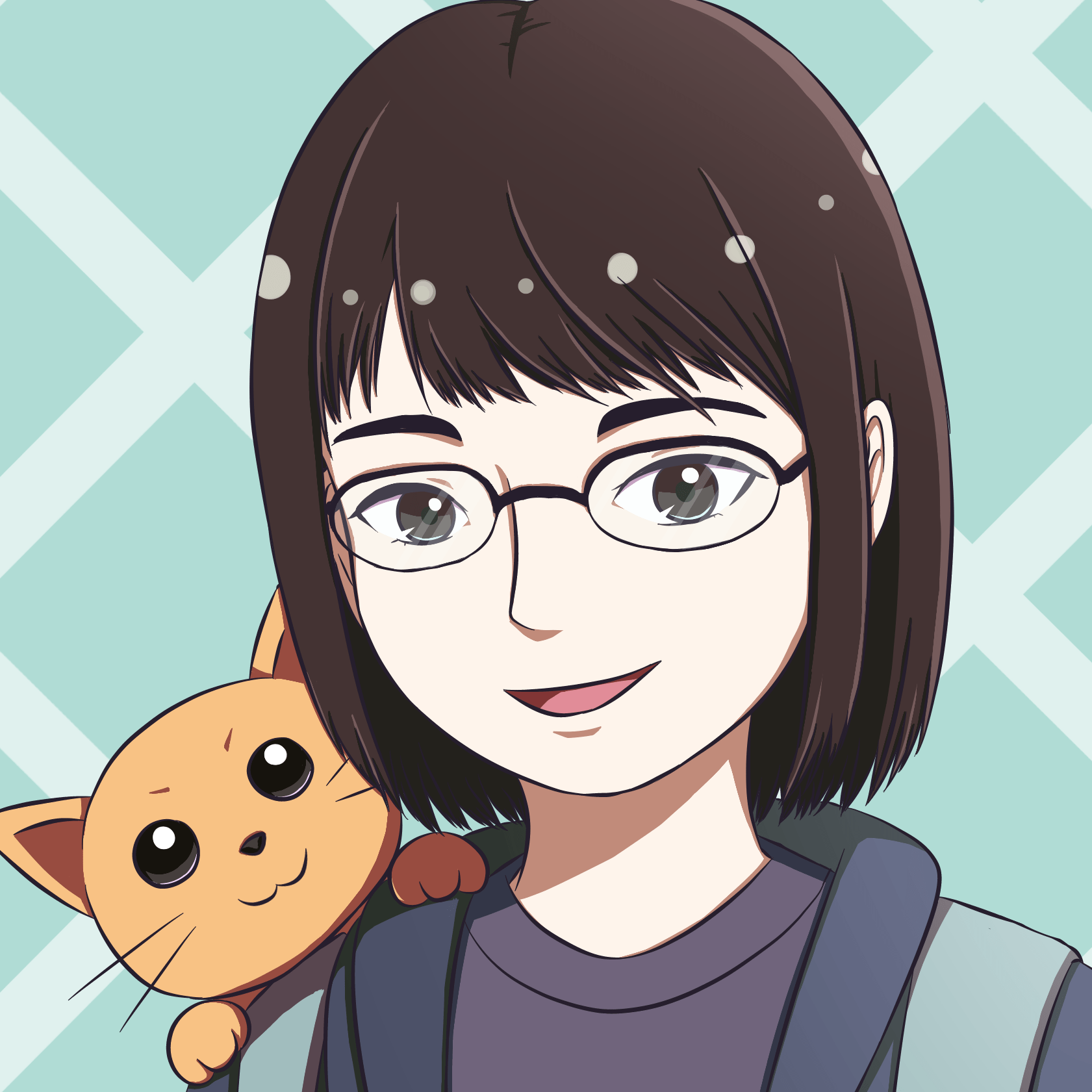
A person with many hobbies (and even more WIPs), KuroKairin plays, playtests, and reviews PC games. She loves games with good stories that bring her on an emotional and thought-provoking journey. Her favourite genres include otome visual novel, point and click, puzzle, and RPG. Follow her @KuroKairin.

